Tree frogs are a big family which has more than 800 species around the globe. Just in the USA, you will find 25+ tree frogs that produce different types of croaks and calls. That’s a lot, isn’t it? How do you differentiate between them? The simplest way to do that is by the buzz they make.
This type of tree-dwelling frog has the amazing ability to make sounds by using the lungs & mouth with the help of airflow. Their air sacs that are right below the mouth help them to produce beautiful calling tunes. The sac will get bigger and smaller as they trill.
It’s time to stop shooting random arrows. I mean, let’s be specific and explore some in-depth information about 33 different types of tree frogs and their sounds.

Sounds of different tree frog species: Presented in a Table
Before you jump into the details of each tree frog species I have prepared a table with all of them and their respective sound descriptions:
| Species Name | Scientific Name | Sound Description |
|---|---|---|
| American Green Tree Frog | Hyla cinerea | A series of short, loud, high-pitched “quonk-quonk” or “kreap-kreap” sounds repeated several times. |
| Australian Green Tree Frog | Litoria caerulea | A deep, slow, resonating “brawk-brawk” or “crawk-crawk” sound. |
| European Tree Frog | Hyla arborea | A fast, high-pitched “kre-kre-kre” or “peep-peep-peep” sound. |
| White-Lipped Tree Frog (Giant Tree Frog) | Litoria infrafrenata | A series of low, barking sounds resembling a dog, “wruk-wruk” or “arr-arr” sound. |
| Red-Eyed Tree Frog | Agalychnis callidryas | A soft, low-pitched “chuck-chuck-chuck” sound, similar to a cricket’s song. |
| Gray Tree Frog | Hyla versicolor | A short, musical trill or “gr-ee-ee-eep” sound, lasting about 1-2 seconds. |
| Barking Tree Frog | Hyla gratiosa | A deep, guttural “waa-aa-aa” or “ark-ark-ark” sound, similar to a barking dog. |
| Pine Barrens Tree Frog | Hyla andersonii | A high-pitched, nasal “quank-quank-quank” sound, reminiscent of a quacking duck. |
| Cuban Tree Frog | Osteopilus septentrionalis | A short, raspy “chuck-chuck-chuck” or “krr-rrr-rrr” sound. |
| Borneo Eared Tree Frog | Polypedates otilophus | A series of short, high-pitched “tink-tink-tink” sounds, similar to a bell. |
| Waxy Monkey Tree Frog | Phyllomedusa sauvagii | A series of soft, high-pitched “wheep-wheep-wheep” sounds. |
| Amazon Milk Frog | Trachycephalus resinifictrix | A series of low, resonating “quack-quack-quack” sounds, similar to a duck. |
| Gliding Tree Frog | Agalychnis spurrelli | A short, raspy “rree-rree-rree” sound. |
| Blue-Sided Tree Frog | Agalychnis annae | A series of rapid, high-pitched “trill-trill-trill” sounds. |
| Dainty Green Tree Frog | Litoria gracilenta | A series of short, high-pitched “pip-pip-pip” sounds. |
| Squirrel Tree Frog | Hyla squirella | A series of short, nasal “mee-mee-mee” sounds, similar to a squirrel’s call. |
| Pacific Tree Frog | Pseudacris regilla | A series of short, high-pitched “kreck-ek-ek” or “ribbit-ribbit” sounds. |
| Bird-Pooping Frog (Bird-Dropping Frog) | Theloderma asperum | A series of soft, high-pitched “tseet-tseet-tseet” sounds. |
| Leaf Green Tree Frog | Litoria phyllochroa | A series of short, high-pitched “weep-weep-weep” sounds. |
| Wallace’s Flying Frog | Rhacophorus nigropalmatus | A series of low-pitched, resonating “croak-croak-croak” sounds. |
Similar Sounding Tree Frogs
The previous table is still a bit overwhelming. Here’s a table categorizing groups of tree frog species with similar-sounding calls:
| Sound Category | Species Names | Sound Description |
|---|---|---|
| High-pitched peeps | European Tree Frog (Hyla arborea), Dainty Green Tree Frog (Litoria gracilenta), Leaf Green Tree Frog (Litoria phyllochroa) | A series of short, high-pitched sounds like “peep-peep-peep,” “pip-pip-pip,” or “weep-weep-weep.” |
| Barking sounds | Australian Green Tree Frog (Litoria caerulea), Barking Tree Frog (Hyla gratiosa), White-Lipped Tree Frog (Litoria infrafrenata) | Deep, resonating or guttural sounds like “brawk-brawk,” “waa-aa-aa,” or “arr-arr.” |
| Quacking sounds | American Green Tree Frog (Hyla cinerea), Pine Barrens Tree Frog (Hyla andersonii), Amazon Milk Frog (Trachycephalus resinifictrix) | Quacking or duck-like sounds like “quonk-quonk,” “quank-quank-quank,” or “quack-quack-quack.” |
| Trilling sounds | Gray Tree Frog (Hyla versicolor), Blue-Sided Tree Frog (Agalychnis annae) | Short, musical trills or rapid “gr-ee-ee-eep” or “trill-trill-trill” sounds. |
| Chuckling sounds | Red-Eyed Tree Frog (Agalychnis callidryas), Cuban Tree Frog (Osteopilus septentrionalis) | Soft, low-pitched, or raspy “chuck-chuck-chuck” or “krr-rrr-rrr” sounds. |
| Unique calls | Squirrel Tree Frog (Hyla squirella), Pacific Tree Frog (Pseudacris regilla), Bird-Pooping Frog (Theloderma asperum) | Distinct calls like “mee-mee-mee” (squirrel-like), “kreck-ek-ek” (ribbit-like), or “tseet-tseet-tseet” (bird-like). |
Please note that the sound descriptions provided are generalizations, and individual frogs within each species may produce slightly different sounds.
33 types of tree frogs sounds
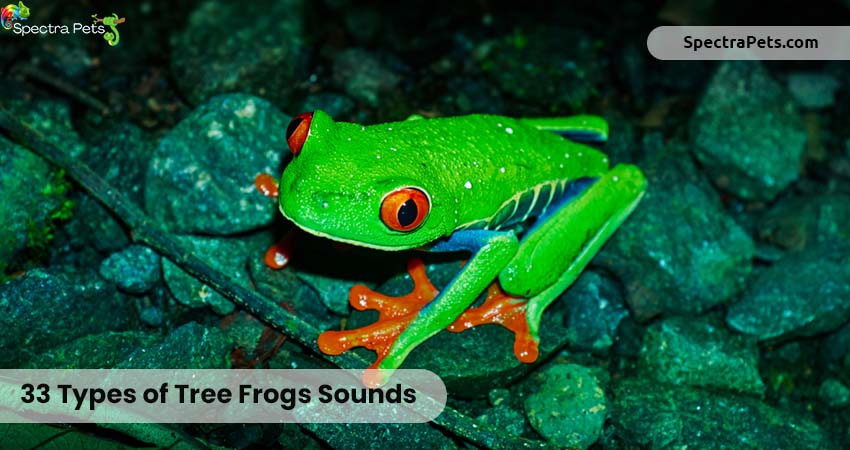
You will find there’s a variation of the tree frogs calling time in 24 hours, breeding time, warning call, the pitch of the call, speed, and repetition of the trills of tree frogs.
Each tree frog has its unique characteristics while you will also find some tree frogs have the same tune of calling. Now, let’s see how each of them sounds…
1. Northern cricket frog

These amazing creatures start calling in April month and continue until August. This timeframe is the Northern cricket frog’s breeding time.
The trill of this tiny frog feels like a rasping sound & also a clicking sound. As if pebbles are knocking or tapping with each other. It also resembles a gick gick gick sound. This sound can be repeated up to 20 times.
Moreover, the calling also resembles a ‘’ glick glick glick ‘’ tone. The male frog calls out from the river banks and marshes to attract the female frog.
2. Southern cricket frog
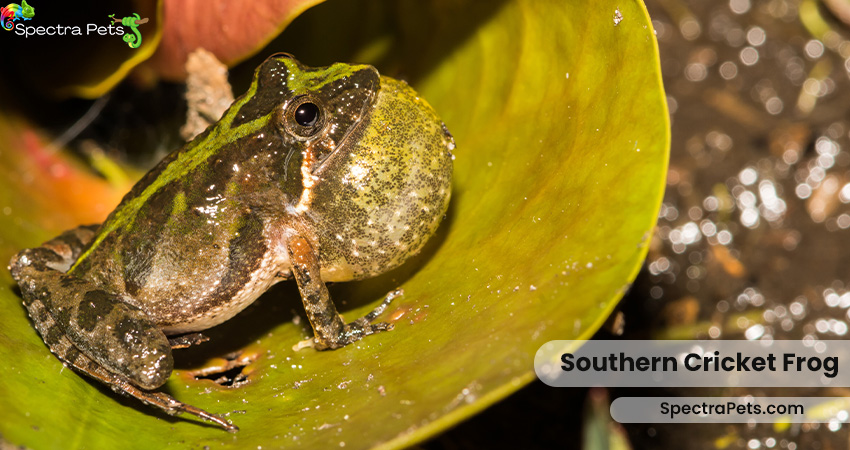
In terms of sound, you will find the southern cricket frogs sound very close to the Northern cricket frog. The only difference is it’s more metallic.
However, their calling is a combination of a series of clicking or tapping sounds. You will hear calling the male mostly in the evening and nighttime. But they break the normal rule and start calling in the daytime when they enter into the breeding season.
As they tend to call frequently in their mating period, you can hear them making sounds in the swamp, ponds, wetlands, ditches, etc.
3. Pine barrens tree frog

These nocturnal tree frogs are rarely seen but you can surely hear their sound while roaming around in the pine forest or sandhill part of North Carolina.
Typically this tiny creature starts calling from April all the way to September. Pine barren tree frogs’ favorite breeding spot is either ground or aquatic plant area that is close to the lakeshore.
Like most other frogs, the male calls out to the female and the sound is almost like a honk and it has got a nasal tone too. They keep repeating the call pretty fast up to 20 times with uneven intervals.
4. Canyon tree frog
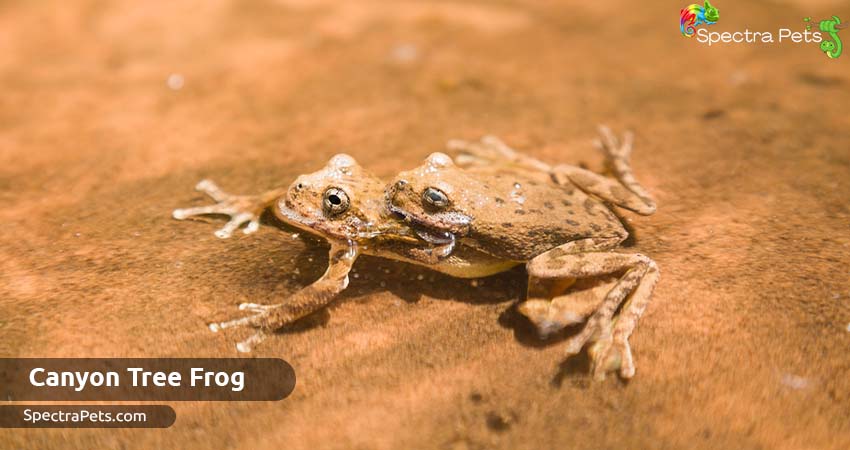
Compared to their tiny size, they produce a powerful sound. You will rarely see them calling in the daytime as Canyon tree frogs are nocturnal animals.
However, they might call at day if they hear the sound of thunder or any louder noise in their habitat. They do it as a part of their natural response.
Unlike other frogs, the male of the species tends to sit in a form of a group and call the mating partner. Mostly the call is heard at night and it’s a fast pace call.
Their mating season is the summer rain time which is July and August. Even in spring rain, they go for mating. So, during all these times, they will call heavily from the small rocky creek of New Mexico, Arizona, and the southern part of the USA.
5. Bird voiced tree frog
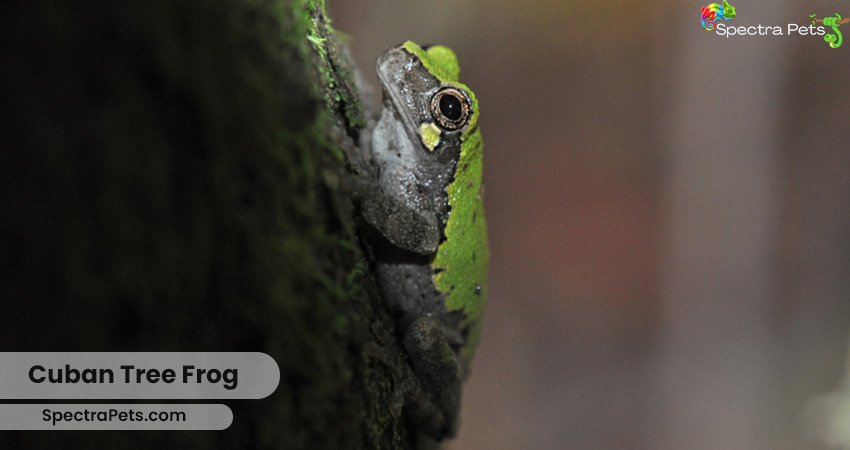
This species is native to a big area on the southeastern side of the USA. Their mesmerizing call feels really good to the ears. Though it’s an amphibian, the sound it produces is almost like a bird’s sound.
Plus, the nature of Bird voiced tree frog calling is high-pitched and can be heard from a far distance. Mostly you will get to listen when you are close to a wooden swamp area or any large creek.
The calling of this frog is rapid and a birdlike whistle can be heard around 20 times. In the ears, it feels like a‘’ wit wit wit wit ‘’ sound.
This nocturnal amphibian calls the female throughout the day during breeding season. The favorite spot for male during mating time is trees that are close to water, or under tree shrubs at the surface level of the swamp.
6. Eastern gray tree frog sound
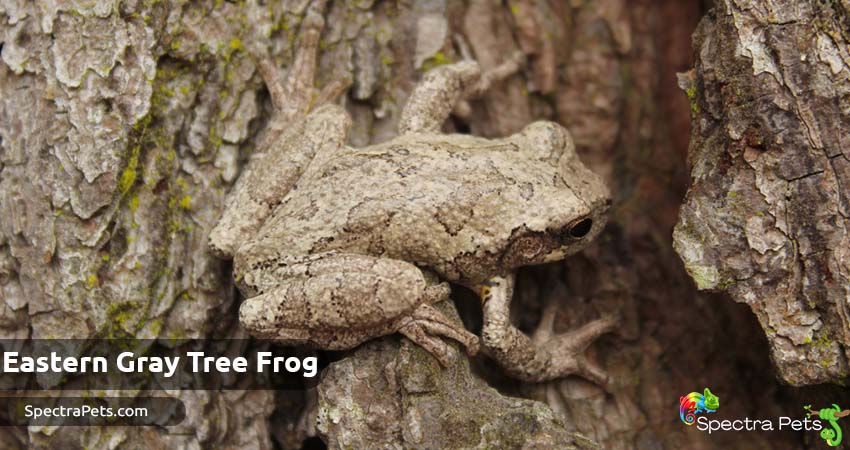
Spending most of the time in trees, this species only comes to the ground when breeding season knocks at the door.
This amazing frog produces a built-in melodious tune when it calls for a partner. The duration of their calling remains around half a second and they keep repeating the ear-soothing sound after every few seconds.
However, they can also change the tune-in to a different one for threatening the other male to stay away from their territory. And that tune can be a weeping sound or a squeaky chirp sound.
So through sound, these solitary critter do a strong vocal communication to keep themselves winning in the mating competition with the female.
You can hear the eastern gray treefrog calling from late April up to August month.
7. American green tree frog sound

The American green tree frog generates a quick nasal honk that can repeat 75 times in a single minute. It almost resembles the sound of a bell.
They start calling out for females from mid-April to mid-August. During calling times, males love to stay in their preferable breeding zones.
If you live in Florida, Missouri, Kentucky, or eastern Texas then it is quite possible that these beautiful amphibians are screaming in your backyard or in your garden pond.
However, the male makes the mating call from places like marshes, cypress swamps, and corners of any lake or pond where the aquatic vegetation is high.
It’s common for them to make sounds at night time due to their nocturnal behavior.
8. Arizona tree frog

The Arizona tree frog makes 2 types of calls when its body gets ready for breeding. After the rainfall of the monsoon season, they get into water bodies like temporary water pools, marshes, shallow ponds,s and roadside ditches.
Using the loud metallic call, these frogs attract their female partners into the temporary breeding ground. While they create a rasping sound to keep away another male frog from touching the females.
It’s unusual to hear them calling in the daytime as they normally call in the evening and night.
9. Lowland burrowing tree frog

The lowland burrowing tree frog is a native amphibian of some parts of Arizona, and the western & southern central part of Mexico. These magnificent amphibians start calling in June and continue till August.
Plus, the pattern of the sound is a low-pitched sound. The sound is pretty loud and generates honky noise. However, the noise level does reach too high. This calling tune repeats multiple times within a second.
Right after the summer rain, the male of this species gets into the temporary pool, or even on the forest floor, and starts calling the upcoming mommy of his offspring.
As soon as the beautiful female meets the male, he gives himself to rest from continuous calls.
10. Pacific tree frog
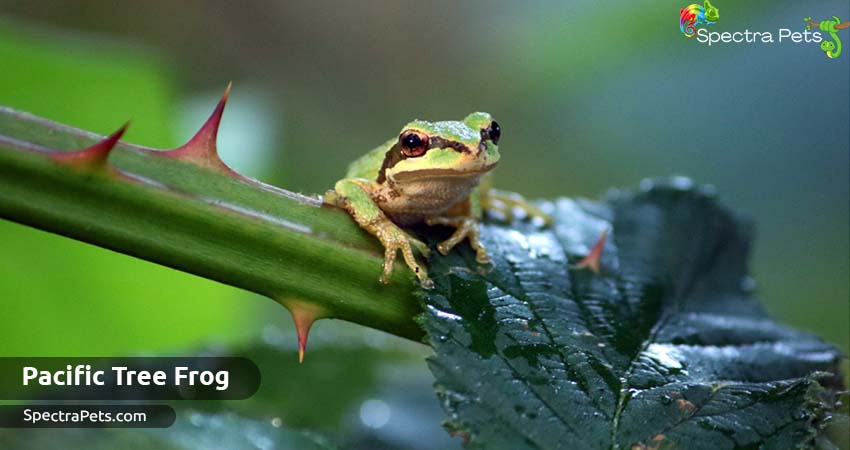
The Pacific tree frog is the native species of Montana, Nevada, Baja California, and British Columbia. Their calling time is quite long and stays from February-July.
Throughout the years, it’s pretty common to hear the call of the pacific frog from the dry land and the sound is a lengthy creee-eee-eek tone.
When they enter into the breeding season, they make both warning calls for other males and mating calls for females. The males create a short but high-pitched call to attract the females.
You can encounter these small creatures calling from temporary or permanent shallow water pools in the month of November-July.
11. Barking tree frog
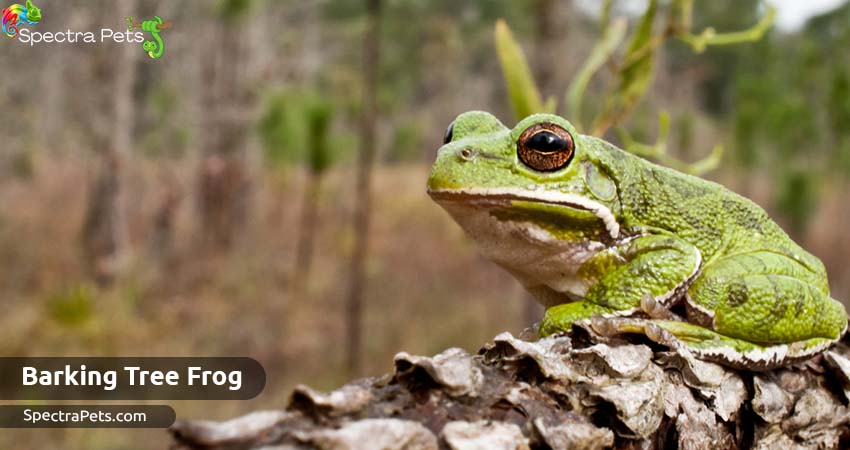
It is known as the Barking tree frog because of the loud noise or honk that it creates during its breeding time. Every few seconds, they emit this honking sound.
It’s quite common for the native people of southern-eastern Carolina & Georgia to hear the call from the swampy wood close to water or in sandy areas.
Male starts calling the female in April and this calling period remains up to September. In contrast to other Hylidae members, this species calls on only daytime.
12. Southern chorus frog

To attract the female in the breeding season, the southern chorus frogs make a musical, mechanical and rasping trill. Which resembles the sound of a fingernail running over the teeth comb.
They are winter breeders. However, they can occasionally call in cool rain at any time of the year. By nature, they are extremely shy and call mostly from the tree base or vegetation base that’s close to water.
A male’s target is to mate with the most females and so they loudly call the female frequently during January- March.
13. Common Mexican tree frog sound
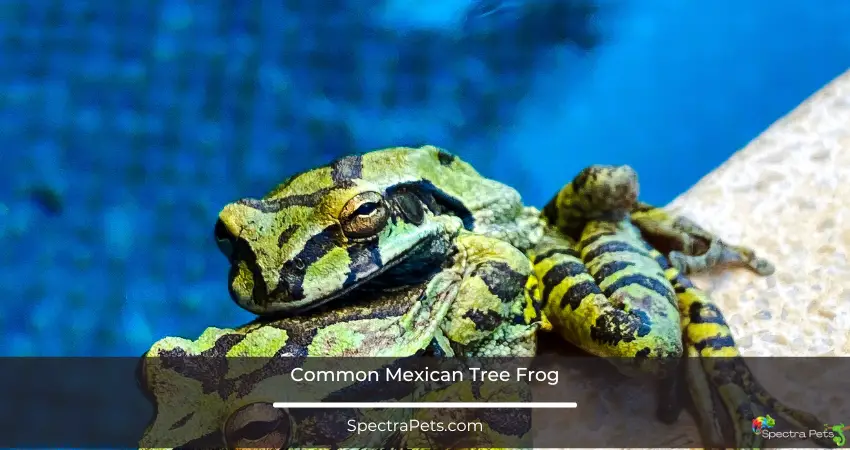
With a bit of a unique tune, the common Mexican tree frog calling sound is a medium-pitched sound. In their calling, you will hear occasional chuckles.
This calling tune might be repeated around 5-12 times just within 2-3 seconds with a 2-3 second gap.
You will find this nocturnal animal calling their female partners from June-October. The male relaxes in shallow water and keeps calling until the female comes after feeling irresistible by the male frog’s call.
14. Western chorus frog
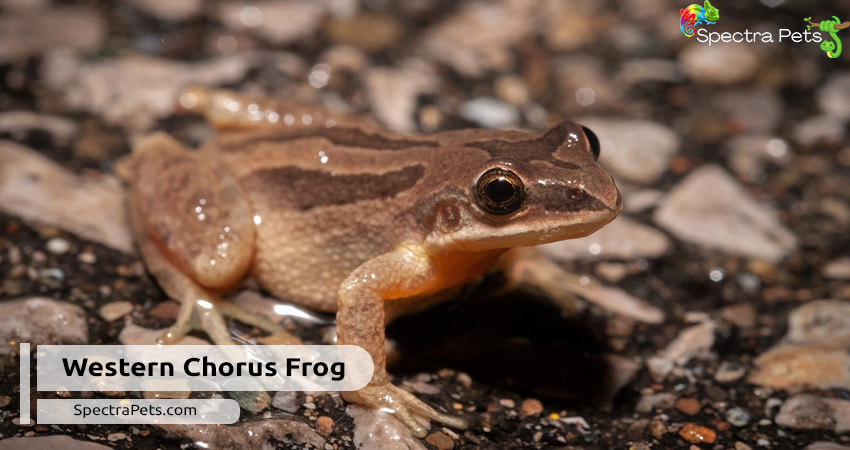
The call of the western chorus frog indicates that spring is here. These tiny amphy buddies can generate a high pitch trill that can spread out to a good distance.
Even if you pass through a distance from their breeding ground in the mating season, you can easily & clearly hear the male calling like a legend. Moreover, the calling sound of the western chorus frog is similar to running your fingernail on a plastic comb.
Regarding timing, they can literally call any time in the day or night. The duration of calls can last from half second to two seconds. And they keep repeating the sound around 18-20 times per minute.
When the temperature goes high, the western chorus frog tends to make sounds frequently. That means, at midday, they call more compared to other times.
15. Ornate chorus frog sound
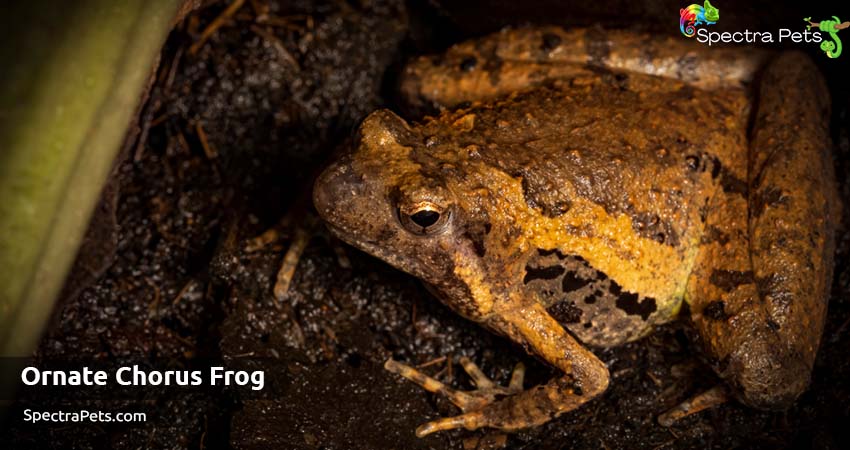
Living in the southeastern part of the USA, the ornate chorus frog is like a wooden habitat. These tiny amphibians start calling in December and they can continue up to March.
The ornate chorus frog produces a bird-like peep that is metallic, sharp, fast, and repeated multiple times around 80 times in 60 seconds.
Just like other typical frogs, the male warns another male to get away from their breeding spots like small temporary pools or ditches. And send the high-pitched sound to the female to grab their attention for mating.
16. New Jersey chorus frog sound
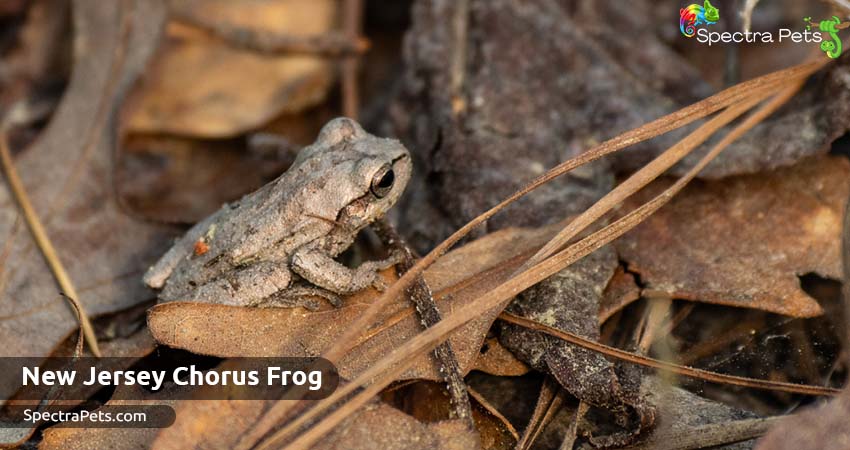
The male new jersey chorus frog call makes a vibrant and repeated creek sound. With time, the pitch of the call goes high and the calling pace increases at the end of the calling.
For your convenience, if you want to know how familiar these frogs’ calling is then know that it’s exactly the sound of running your fingernail on your comb.
Moreover, their calling time falls in their breeding period which is from late winter to June. The most likely area you can hear their call is close to the shallow water ponds, slow stream water, and marshes.
17. Boreal chorus frog sound
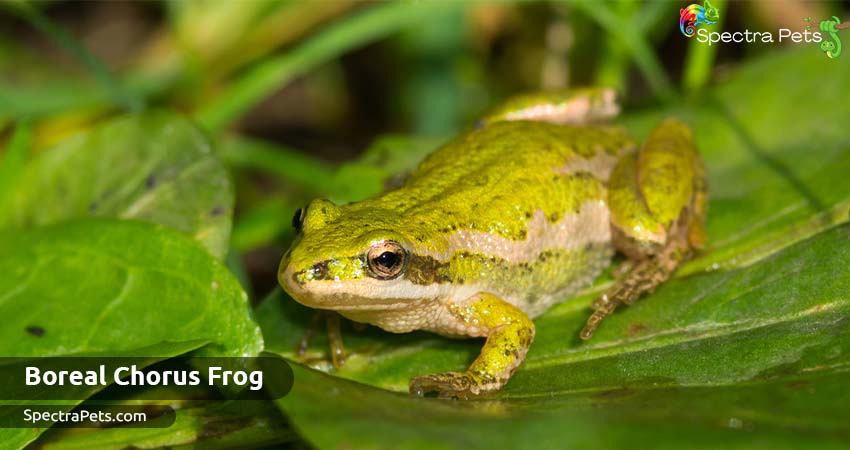
While they call mostly in the evening and night but Boreal chorus frogs would make sounds during daylight when breeding season is in full swing.
Their calling pattern is pretty similar to western chorus frogs but the only difference is the call last longer and is a bit slower pace. The raspy noise can continue for 2 seconds at a time.
Interestingly, this tree frog also makes a sound that feels like someone is running their fingernails along the comb teeth. The unique point about their call is that each one has its own calling pulse.
Plus, you will find them coming out in March or April and the male Boreal chorus frog starts calling from the woodland ponds. This male can call till September.
18. Little grass frog sound

This little buddy’s breeding period last from January – September. If you are native to Florida then you will hear them calling from ponds, wetlands, and ditches with grassy vegetation right after the rain.
Moreover, their high pitch calling would not be possible for everyone to hear during breeding time. The male little grass frogs will be making the insect-like and tinkling call to get the females from their desirable breeding ground.
Much like other frogs, this species has some peak moments for calling partners. Which includes nighttime when the humidity stays at peak or during rainy moments.
19. Strecker’s chorus frog sound
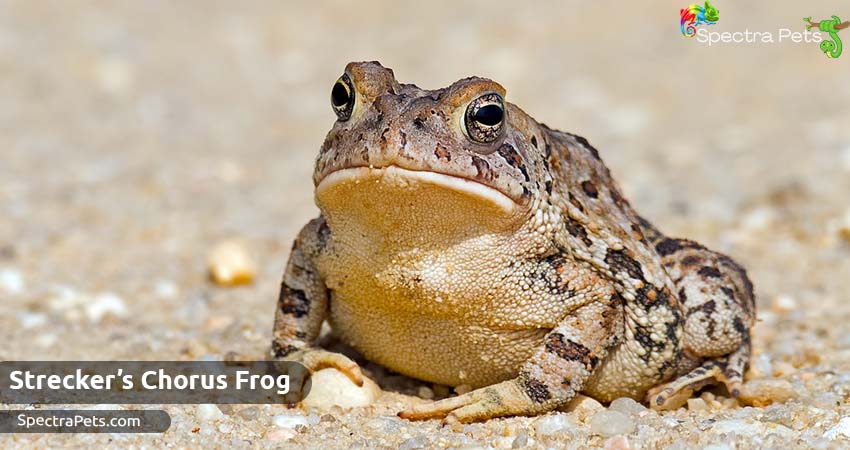
You know that like humans, tree frogs use their calling sound as means of communication with other males and females. They have such a loud voice that they can be heard from a quarter mile away.
A large size frog can make a call that almost sounds like a squeaky wheel. Their call is a unique single bell note which repeats fast multiple times.
The male species of Strecker’s chorus frog call to keep away and warn the male to leave their area and to hold the attention of the females.
Though the calling sound can be heard anytime within 24 hours, it increases during daytime during the peak of the mating season. During early spring, the people of Oklahoma can hear the call from flooded fields, small water bodies, and roadside ditches.
20. California tree frog
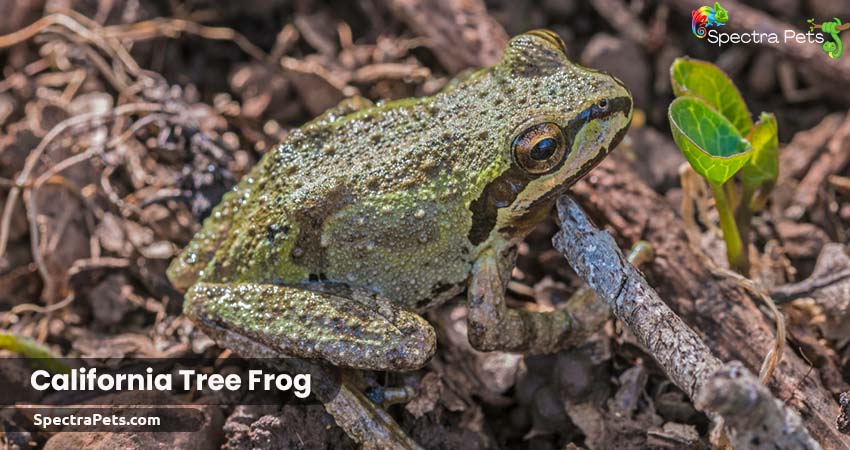
Belong to the state of California, they emit a loud sound that resembles the quacking tone of ducks. This sound is a low pitch one and they repeat the call frequently.
Their calling time is fixed at night time. This species will give a warning trill if other male tend to come closeby to his chosen breeding ground.
You can experience calling them from canyons, streams or permanent pools.
21. Baja California tree frog sound
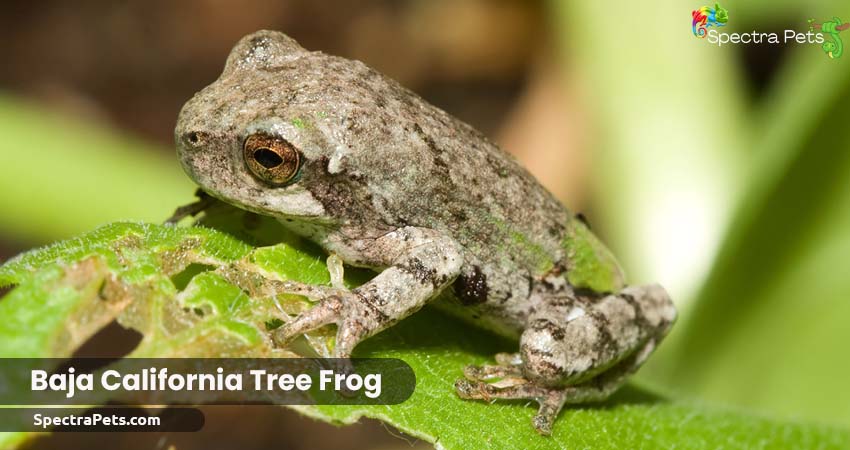
Another tree frog from California is known as the Baja California tree frog. These amphibians can generate two types of calling.
The first one is the diphasic call which mimics the word rib-it and krek-ek. They can make this sound both day & night.
Another type of sound is the monophasic call which is to attract the female into the breeding ground.
Seasonal ponds, marshes, wet meadows, roadside ditches, and slow streams are their favorite ground. During the breeding season, it’s pretty common to call from such areas.
22. Illinois chorus frog sound
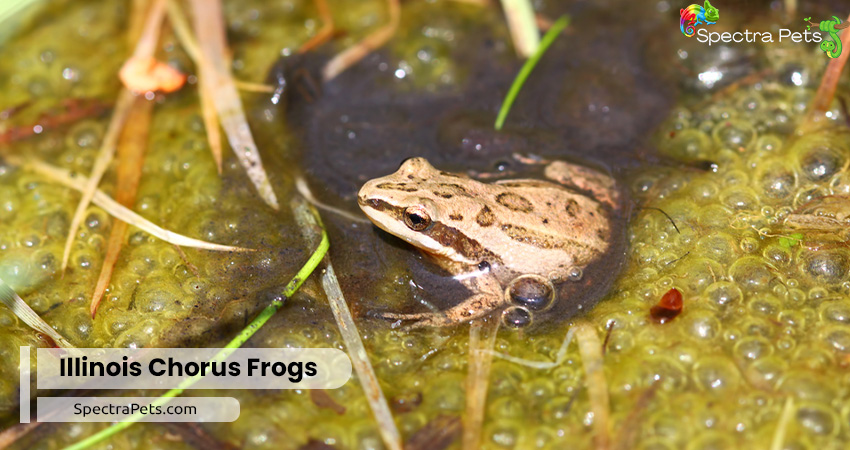
This specific frog makes a call that’s a combination of high pitch and birdlike sounds. They make sounds or whistles in a series.
From February to the end of March, the male Illinois chorus frog makes whistles to catch the attention of the females nearby.
So, you can hear them calling from agricultural land, wetland, and grassland areas during breeding time.
23. Squirrel tree frog sound

Mostly found in Florida & Louisiana, the Squirrel tree frog starts calling from March until October. Right after the monsoon rain, these frogs make a sound that resembles the sound of a squirrel.
The calling pattern of this frog is to repeat a nasal quacking tone multiple times within 1 second. Due to their extreme interest in the breeding season, they can make the call to the female during the daytime, evening, and night.
Though the squirrel tree frogs are found mostly in shrubs, trees, or high vegetation areas in their breeding time, you will find them calling from the edge of the lake, pond, and shallow water bodies.
24. Brimley’s chorus frog

This species sings a short but fast trill which it repeats within a second. Their calling tune is a bit raspy and you can clearly hear the call from swamps, shallow water bodies, and floodplains, etc.
In terms of the calling tune pattern, it’s also similar to the Southern chorus frogs sound which is like someone is running his fingernail on the plastic comb.
From December to April, these frogs keep calling for the female Brimley’s chorus frog to mate and increase their number in the ecosystem of the Coastal plain.
25. Mountain chorus frog
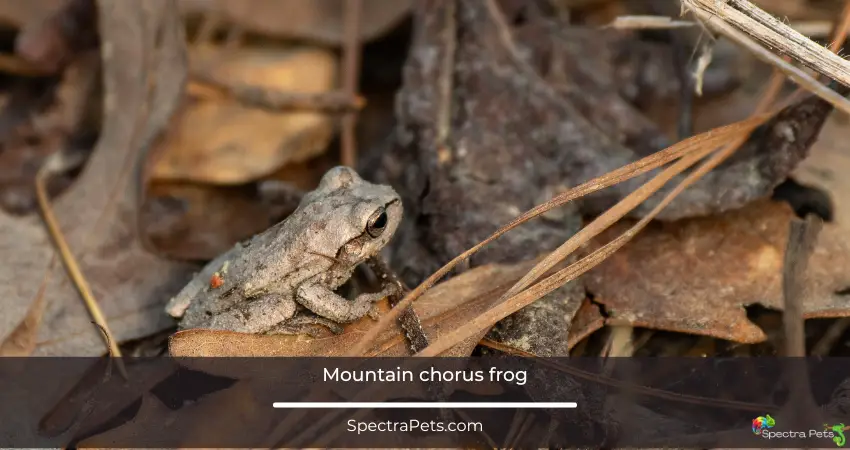
As their breeding time falls between February to April, it’s common for the native people to hear the mountain chorus frogs calling at that time.
The pattern of calling tune is a low pitch but a combination of fast sounds that feel like ‘’ Reee-rack’’ in the ears. You can also relate this sound with the trill of Brimley’s chorus frog & Southern chorus frog.
High in the Appalachian, these magnificent frogs, male species, invite the female with their beautiful trill in the breeding area like shallow pools, ditches, or streams.
26. Cajun chorus frog

Shallow grassy ponds, flooded fields, grassy areas, etc are the desirable mating space for the midland chorus frog. Whenever the male hits the maturity level, they move forward in such areas.
They take their position and start calling the female for reproduction.
Remember I talked about the calling tone of the mountain chorus frog and the southern chorus frog. It’s exactly like that. When the temperature of their habitat rises during the breeding time, they tend to call more.
27. Blanchard’s cricket frog sound

The calling of Blanchard’s cricket frog sound is almost similar to one marble knocking with another marble. In another way, it’s a metallic call that generates a ‘’ gick gick ‘’ sound.
Both day and night, the male will produce this sound during the breeding period to attract the female while giving the red signal to the male frog to stay away. It can continue calling both day and night.
The pace of the calling starts quite slowly and gradually the speed increases.
28. Cuban tree frog
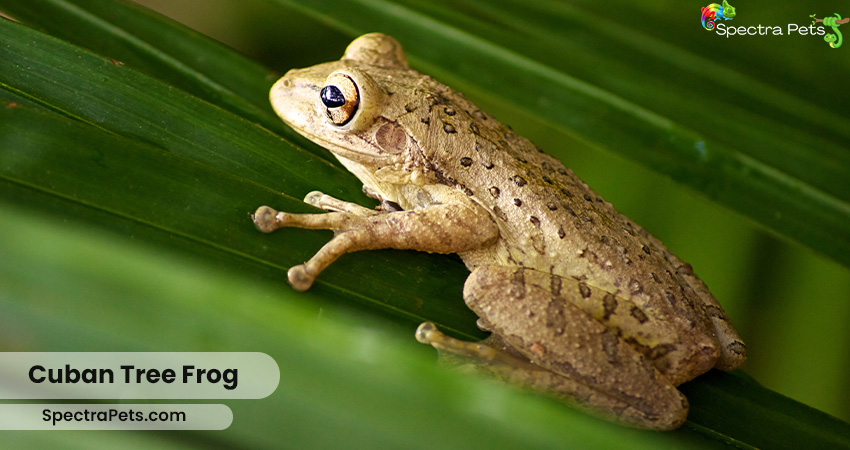
As their breeding time falls between May-October, the people of Florida will hear them calling during this time range.
Their sound pattern is high-pitched, extra loud & fast call that feels like a grating stone sound.
These species keep calling until the female arrives at the breeding spot for mating. It’s not surprising to hear their sounds from your backyard or close shallow water pools.
29. Pinewood tree frog
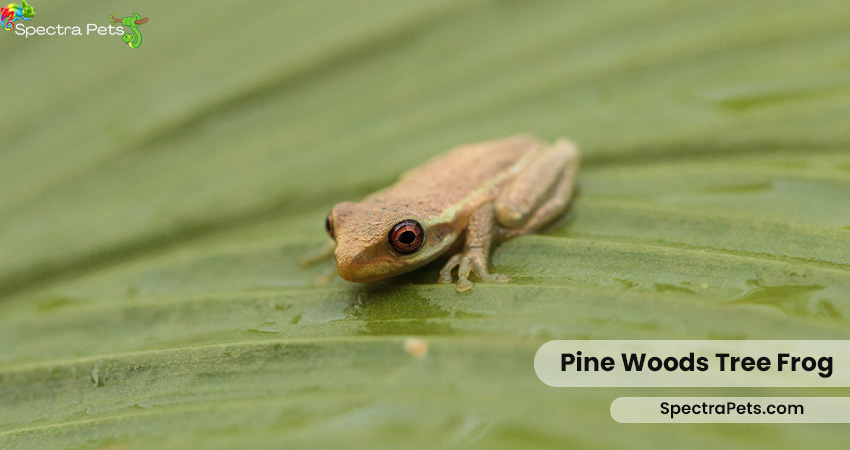
Located in the coastal plain of the USA, these extraordinary amphibians have an unusual call that sounds like that of a machine. You can relate their calling to Morse code.
The male takes its position in their temporary breeding zone & makes the Kek Kek Kek call to attract the female. It’s common to see these little buddies calling from vegetation just beside the low-depth water bodies like cypress swamps.
Moreover, this native pine forest wood lover calls the opposite gender from March to October. It’s almost a rare event to hear the call a day. They keep calling from the evening to the end of the night.
30. Cope’s gray tree frog
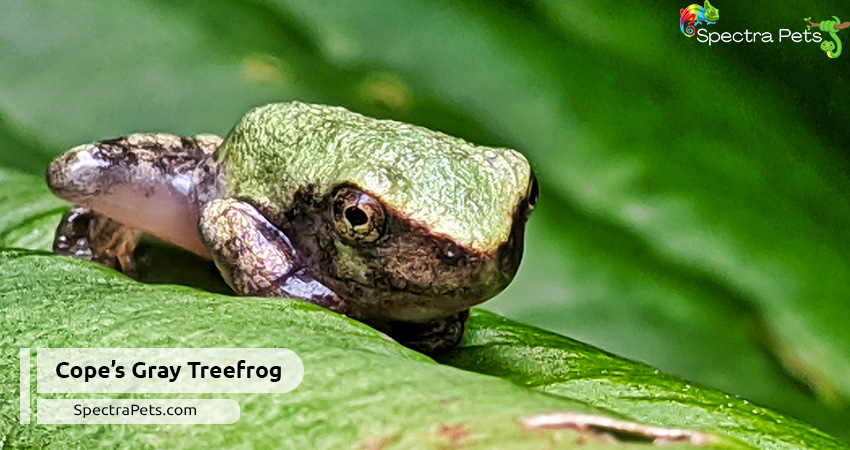
This species can generate two types of call, one is to bring the female close to them for mating. And, another one is to threaten another male Cope’s gray.
For attracting the female, they make a lovely & melodious call that lasts close to half a second. The trill of this amphibian is fast & quite high-pitched.
When the male threatens & gives a warning for their territory then they make a weeping sound. Generally, the calling time can be heard from April to July.
31. Spring peeper frog
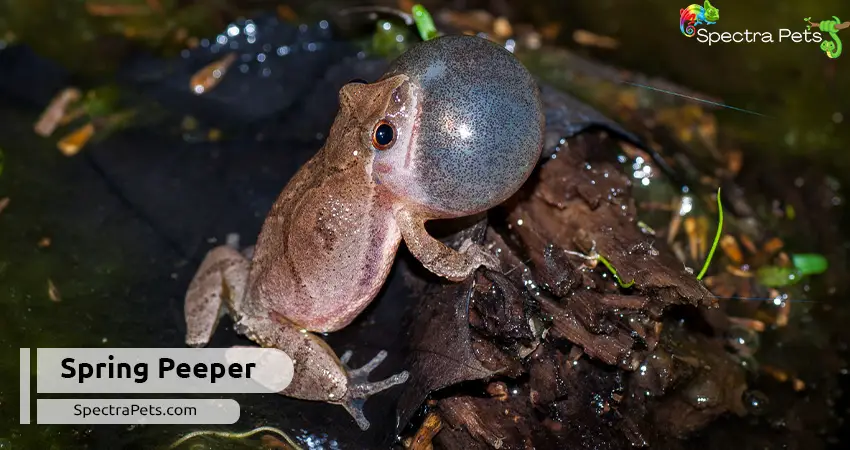
You will feel the presence of spring peepers during rainy times. This beautiful critter begins to call from November- April.
Though small in size, the trill is so loud that anyone can hear this from a good distance. When the climate is good for them, they can produce trill any time of the year.
Moreover, their loud peeping call is almost similar to sleigh bells’ noise. This high pitch sounds most common time is from the evening – late at night.
You will be shocked to know that the call can go high up to 80 decibels. And the pattern of calling is fast & repeats around 20 times per minute.
32. Upland chorus frog
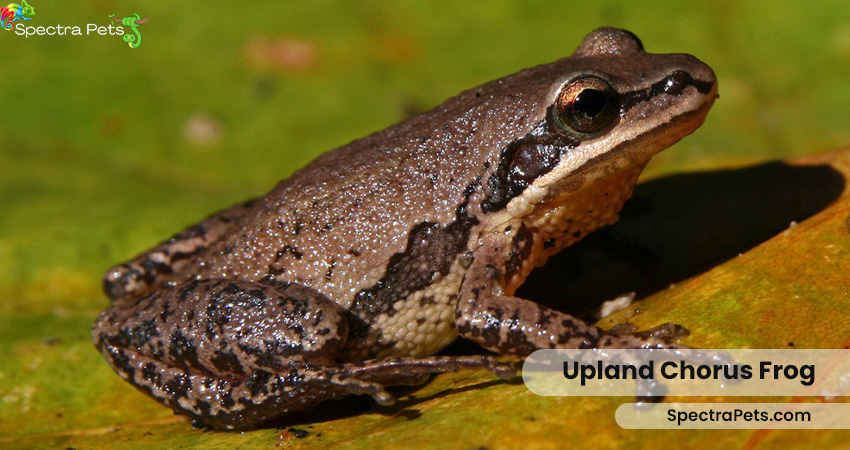
The creaking sound of this species is similar to the call of a mountain chorus frog. You can relate the call to someone running their thumb on a comb.
Due to their breeding time, it’s usual to hear their calling from Winter to the beginning of Spring.
Like other Hylidae members, the male calls out to attract the female. Common sites of this amphibian are coastal plains & mountain zones, grassy swales & vegetated shallow water bodies.
33. Spotted chorus frog
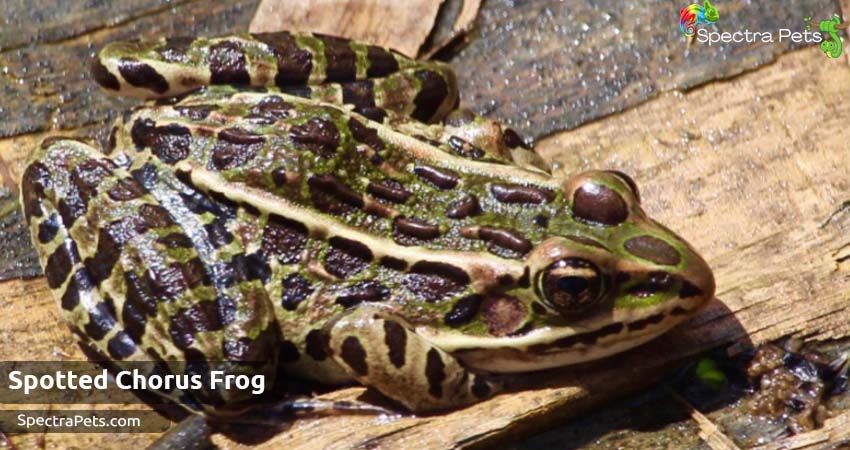
This fantastic species uses its advertisement sound for mating with the female & to give a warning to the male close by.
Due to their nocturnal behavior, the native people of the central USA will hear their call mostly at night or evening. Their calling sound is a fast call that sounds like someone is running the fingertips on a plastic comb.
However, when in the breeding ground area more than one male makes a call it almost sounds like sawing.
Final Words
Tree frogs call in a wide variety of ways. Each species has its unique nature of calling.
While it might have been hard for you to detect the trill of a tree frog before, now you may be able to guess it fairly accurately, with this little crash course of mine.
Hopefully, this blog post increased your knowledge regarding tree frogs’ sounds.

